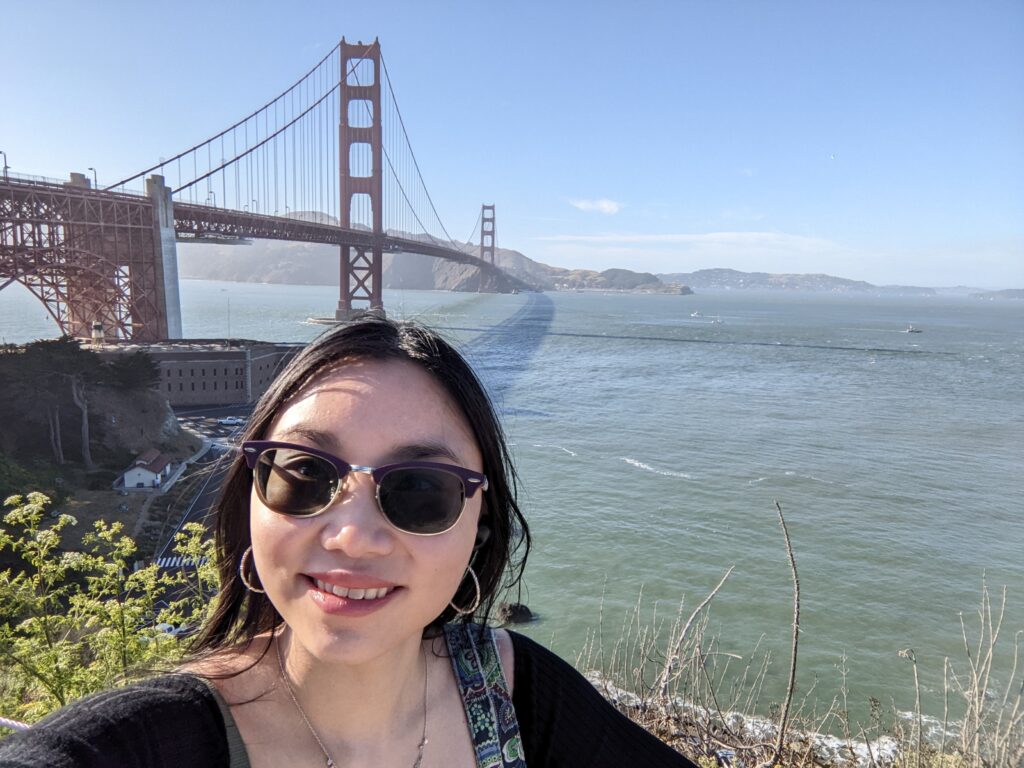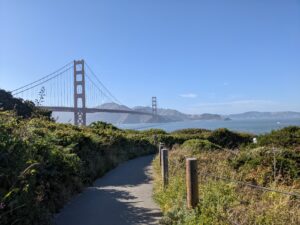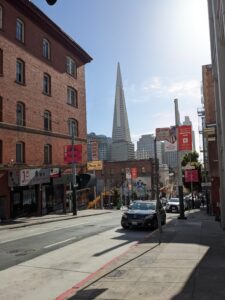
It was my first time travelling since the pandemic and of course I didn’t need to bring a coat. I had been diligently watching the forecast for San Francisco for a week, and I was certain that I could weather 68°F and sunny with only a light cardigan and short sleeves. Yet as I watched the sun set on Crissy Field (a beach on the northern tip of San Fran) and took pictures of the Golden Gate bridge, I was nearly blown over by the staggering wind. I really wish I had brought a jacket.

I spent the weekend in San Francisco before taking the BART (a subway system that was delayed several times), waiting for the Caltrain (which was also delayed), and then booking an Uber to Palo Alto for my summer practicum. In Palo Alto, I spent the week with Stanford’s Rural Education Action Program (REAP), which works with rural, low-income populations in China. As a (now) second year MPH student with a Global Health concentration, I was excited to find an opportunity to work with populations in China, which is my area of interest. I began learning Chinese during undergrad at UNC, and the various study abroad trips and classes since then have been equal parts fun, academic, and a way to learn about my own heritage. Within public health, I also have interests in maternal child health and health policy, as well as digital health.
REAP’s research utilizes new technology to target children’s health, nutrition, and education, which is a perfect fit for my interests. Specifically, I will be working on the Healthy Future project, which uses an app to provide modular education sessions for new mothers and caregivers, delivered by community health workers. These home visits cover everything from breastfeeding, maternal nutrition, prenatal care, and preventative health and daily care, all depending on the age of the fetus/baby. The Healthy Future app itself is directly utilized by community health workers, who book, manage, and conduct these home visits.

Currently, Healthy Future is at a midpoint in their intervention: the home-visits have been ongoing for almost a year now and midline surveys are complete. A good next step is to update the app; a particularly interesting update that is being considered is “adaptable” home-visits. This is where I come in: my role is to conduct interviews with community health workers, caregivers, and supervisors to identify ways to improve the app and its adaptability. Adaptability, or the ability for the app to tailor itself to every family’s differing needs (i.e. more/fewer visits, different content, and different content for different caregivers), will inform the next step of the project. I am excited to draw upon my language skills, cultural knowledge, and Gillings coursework for this summer practicum. This will be my first qualitative experience outside of Gillings and I am eager for hands on experience with NVivo. I am excited to work with the team at REAP and their partners in China and learn how to run my own (mini) project across countries. I hope to build connections within organization and I am interested to learn more about how Healthy Future is changing the landscape in rural China. At the very least, I’ve learned that I should always bring a jacket.
-Sam
